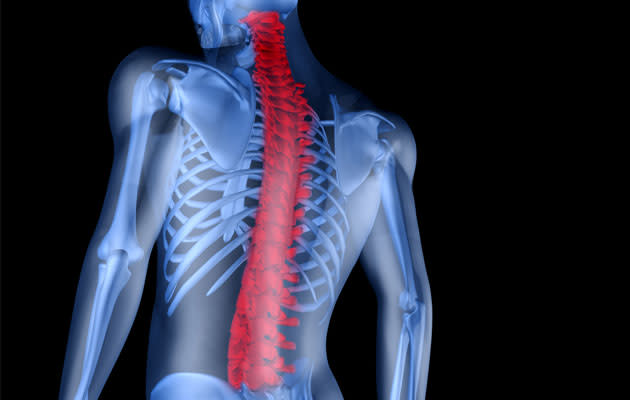 Fit to Post Health
Fit to Post HealthHow back pain can affect your eyes and heart
By Anjana Motihar Chandra for HealthXchange.com.sg.
Health Xchange's articles are meant for informational purposes only and cannot replace professional surgical, medical or health advice, examination, diagnosis or treatment. Get more health tips at HealthXchange.com.sg and sign up for our FREE e-newsletter.
Do you have low back pain that is worse at night, in the morning or after a prolonged period of inactivity? Does it improve with exercise? This type of low back pain can be an early symptom of ankylosing spondylitis, an inflammatory disease of the spine.
Ankylosing spondylitis is a type of arthritis called spondyloarthritis. It typically affects the joints of the spine. However, it can also affect the peripheral joints in the body such as the hips, knees, ankles and feet. Patients may experience problems with walking, getting out of bed, bending forward and other daily activities.
Ankylosing spondylitis tends to begin between the ages of 20 and 40. Both males and females are equally at risk.
“There is no cure for ankylosing spondylitis but early diagnosis and treatment can reduce the progression of the disease. The challenge is in diagnosing the condition early, as our record shows that on average, patients are only diagnosed with this condition 5 years after the onset of symptoms. A lot of patients suffer from the pain and stiffness during the most productive years of their lives, affecting their work and studies, but early treatment can change that,” says Dr Lui Nai Lee, consultant rheumatologist at the Department of Rheumatology and Immunology and the Autoimmunity and Rheumatology Centre, Singapore General Hospital (SGH), a member of the SingHealth group.
Early treatment of the condition can reduce the rate of disease progression and help prevent the severe, long-term consequences of this inflammatory condition, such as a twisted or severely hunched back, blindness and heart problems. It can also help improve work productivity in patients with this condition.
The diagnosis of ankylosing spondylitis is based on the patient’s symptoms, imaging tests, and an examination of the spine and family history.
Related article: Is your back pain due to a slipped disc?
Symptoms of ankylosing spondylitis
Apart from low back pain, the symptoms of ankylosing spondylitis include:
Stiffness in the back
Stooped posture
Back, hip and heel pain
Pain and swelling in the peripheral joints eg. shoulders, knees and ankles
Stiffness in the chest causing chest tightness and occasionally breathlessness
Limited range of motion involving the spine and hips
Fatigue
“Low back pain is a common symptom, but only one out of 20 sufferers may have spondyloarthritis,” says Dr Lui. “In Singapore, about 1 to 2 in 1,000 people suffer from ankylosing spondylitis.”
Related article: When should you go see a doctor for back pain?
The symptoms of ankylosing spondylitis vary between patients and can be mild or severe. When the disease progresses to a severe stage, new bone called the syndesmophytes may form in the gap between the spinal vertebrae, causing them to fuse together and become rigid and inflexible. This condition is referred to as “bamboo spine”. In the worst case, the spine may lock in a bent position, causing severe immobility and deformity.
Fusion can also cause stiffness of the rib cage, which can affect the functioning of the lungs.
“Several studies have shown that uncontrolled inflammation may lead to an increased risk of ischemic heart disease and other cardiac diseases like conduction abnormalities, aortitis and cardiomyopathy,” says Dr Lui.
Patients with ankylosing spondylitis may also have inflammation in non-skeletal areas, such as eye inflammation, skin inflammation and bowel inflammation.
Causes and risk factors for ankylosing spondylitis
The exact cause of ankylosing spondylitis is unknown. However, there is evidence of a genetic factor – the gene HLA-B27 – associated with the disease. People with this gene are thought to be at higher risk of developing ankylosing spondylitis. A child has a 15 per cent chance of developing the disease if a parent has it.
In the past, it was thought that males were more likely to develop the disease than females, however, recent data shows that females are equally at risk. At SGH, our data shows that females account for more than 30 per cent of all patients with ankylosing spondylitis.
Related article: Don’t put up with low back pain! Get these effective treatments
FREE Doctor Q&A: Got questions about your prescribed or over-the-counter medicine? For example, can it interact with TCM remedies? Does it have any side effects? Is it safe to stop taking your medication at times? This month, take this opportunity to send us any question you may have about medication. Ask our expert – it’s FREE.



